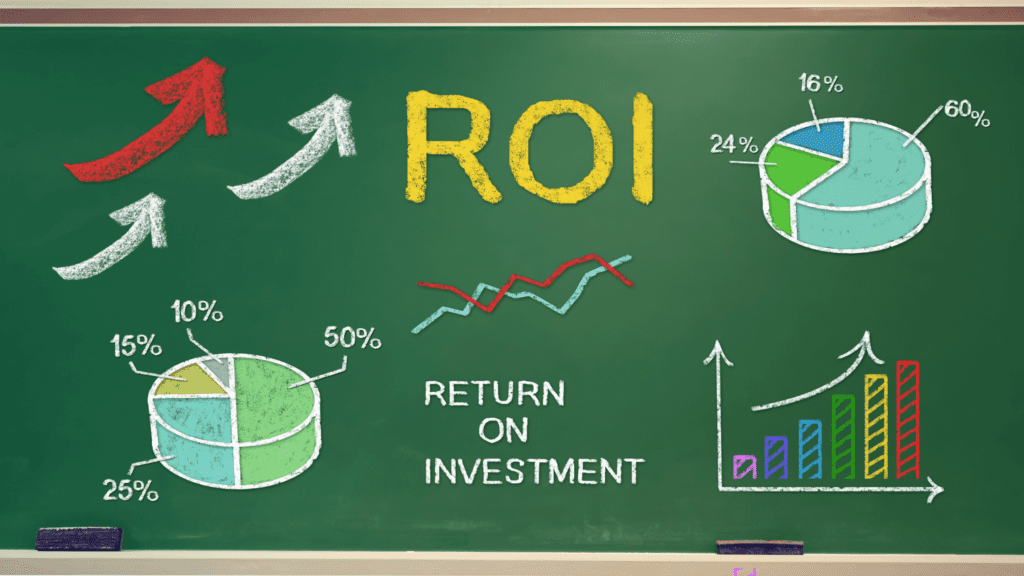For many marketers, ROI is the hardest part to measure. This article is about how to measure and improve the ROI of marketing campaigns.
You can often hear new businesses asking the following question:
“Now that we are going to invest in digital marketing campaigns, what can we expect in terms of results?”
What we are talking about here is Marketing Return on Investment (ROI).
Today, the importance is higher than ever in keeping track of your ROI. This way, you can determine if your efforts have been successful. It gives you the opportunity to adjust and optimize your strategies.
If you don’t track your ROI, you end up working aimlessly regardless of the results your marketing activities generate. It creates uncertainty about your efforts and lowers the confidence of the management and the sales team in your work.
By showing how your marketing activities impact the company’s sales, your efforts instead become a natural part of the company’s overall sales strategy. This creates new opportunities to negotiate bigger budgets and to have more influence internally.
How To Calculate ROI Of Marketing?

First and foremost, you need to understand how to measure the ROI of marketing channels. This way you can determine the extent to which your marketing activities contribute to your business goals.
There are both simple and more advanced ways to calculate ROI. Certain metrics and KPIs are more relevant in some cases compared to others.
The easiest way to calculate ROI for marketing campaigns is to first deduct the marketing costs you incurred from the sales generated as a result of your activities. Then you should divide this number by the costs you had incurred for the marketing.
The Marketing ROI formula looks something like this:
(Sales increase – Marketing investment) / Marketing investment = ROI
Then to get a percentage value, multiply the result you get by 100.
Here Are Some Examples:
Let’s say that your company has invested $50,000 in a marketing campaign.
If the campaign generates $250,000 in sales, based on the ROI marketing formula, we get:
(250,000 – 50,000) / 50,000 = 4 x 100 = ROI of 400%
This means that for every dollar you have invested in this campaign, you get one dollar back and an additional $4.
In B2C and eCommerce, this is usually enough to calculate the ROI on marketing spend. But sometimes, you choose to include everything a customer buys during a time period. This is especially common in B2B, where the first sale may not be that interesting.
What matters more is the relationship with the customer and what it can provide in the long run. If the product or service you deliver is good, there is a high chance that the customer will return to make more purchases.
Therefore, it might be more relevant to calculate the ROI of marketing based on the entire customer relationship. This is a completely different measured value, namely ROI based on Customer Lifetime Value.
How To Calculate ROI Based On Customer Lifetime Value?

Calculating the long-term ROI is often more useful than doing it for a one-time purchase. By looking at the entire business relationship, it will also be easier to calculate what the investment would cost in the form of marketing and sales efforts to bring in a new customer.
In this example, we look at how much an average customer buys during the entire period with your company.
First, we look at how to calculate Customer Lifetime Value.
To calculate Customer Lifetime Value, we need to know:
- How much the order is worth on an average
- Number of orders a customer usually places per year
- How many years a customer stays and makes repeated purchases
All these measured values can also be influenced by working strategically with customer care, marketing automation, etc.
Example Of Customer Lifetime Value:
Let’s say you run a business that sells products for manufacturing and a new customer stays for several years.
Assume the following:
- An average order is worth $50,000
- The customer places an average of 3 orders per year
- The customer stays for an average of 2 years
Customer Lifetime Value then becomes:
$50,000 per order * 3 orders * 2 years = $300,000
To calculate the ROI, you also need to know the marketing and sales costs incurred to bring in such a customer.
So, let’s say you invest $200,000 in marketing and get 4 new customers. This means that it costs $200,000/ 4 = $50,000 to get each customer.
Therefore, ROI:
(300,000 – 50,000) / 50,000 = 5 x 100 = 500%
This is a very simplified example of calculating ROI for marketing. When you are running a company, you would also want to include the employee costs for both sales and marketing in the calculation.
How Do You Know Which Marketing Activities Have Generated Results?

If you do not know which marketing activities generate leads that actually become paying customers, it can be difficult to keep track of their ROI. The result is that you invest in things that you think have an effect, but do not follow a data-driven approach.
Therefore, your business needs a system that can connect marketing activities with your sales.
This will enable you to see:
- Which channels are effective for your business
- The type of content that drives the hottest leads
- What campaigns generate leads that have shorter sales cycles
- The use cases your customers look at before they decide to get in touch with you
An example of such a system is HubSpot. In addition to its many functions for inbound marketing, it also helps you figure out the ROI on marketing.
How To Improve Your ROI?
Of course, you want your ROI for marketing to be positive and also be able to deliver it continuously. At the same time, it is not always certain that your digital marketing and sales will perform better than your competitors.
In order to improve your ROI on marketing, you have to start from the customer and optimize the various steps of the buyer’s journey. This includes, among other things:
- How the person in your target group first discovers your company, e.g., what content people search for and end up clicking on your site.
- What your website looks like and how you can optimize it to convert more leads.
- How good your sales team is at guiding and helping your leads. This could be with the help of the information you as a marketer already has about what they looked at on your website.
The real challenge is how to implement these steps. You need to be both analytical and creative in finding solutions. Additionally, you have to set goals so that you have something to work towards achieving.
Working with Smart Goals is a good start. You also need to make sure that you can measure the business results obtained from the marketing efforts.
When set up properly, you can see the direct effect of your marketing efforts in real-time. At any time, you can decide which activities you should stop and which ones you should try to optimize.
What ROI Can One Expect From Inbound marketing?
Even if you use inbound marketing as a strategy, what you achieve in terms of results differs between companies. As a matter of fact, it differs based on how good you are and what authority your company has in the industry.
It is not unusual for a company to double the number of visitors per month within the first year. You may also see about a 250% increase in the number of leads per month after the same period.
Customers also follow, but it takes a while before they go through the entire process. Their journey begins from first discovering the company to making contact or leaving their contact information.
Smaller companies usually move faster and can sometimes get 200% more leads in just a couple of months. Larger companies (200 employees and up) on the other hand see a slightly slower development.




